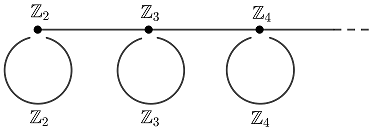Definitions
Say that $(X,d)$ is a $\delta$-hyperbolic space and that $G$ is a finitely generated group acting on $X$ by isometries.
Recall that an action of $G$ on $X$ is called acylindrical if the following holds:
- For every $\epsilon>0$, there exists $R,N>0$ such that for every $x,y\in X$ satisfying $d(x,y) \geq R$, there are at most $N$ elements $g\in G$ such that $d(x,gx) \leq \epsilon$ and $d(y,gy) \leq \epsilon$.
Also recall that an element $h\in G$ is called a WPD element if the following holds:
- For every $\epsilon >0$ and every $x\in X$, there is an $M\in \mathbb{N}$ such that $|\{ g\in G:d(x,gx)<\epsilon, d(h^Mx,gh^Mx)<\epsilon\}|<\infty$.
Via Osin's paper Acylindrically hyperbolic groups, we know that the following are equivalent definitions of being acylindrically hyperbolic:
- $G$ admits a non-elementary acylindrical action on a hyperbolic space $X$.
- $G$ is not virtually cyclic and admits an action on a hyperbolic space $Y$ such that at least one element of $G$ is loxodromic and satisfies the WPD condition.
Questions
It is clear to me that if $G$ acts acylindrically and non-elementarily on $X$, that 2 follows, with $X=Y$. My first question is the following:
Question 1: Given 2, the hyperbolic space $X$ in 1 need not be the same hyperbolic space $Y$ from 2. Is it known how one can construct $X$ given $Y$?
My second question is related.
Question 2: If we know that 2 holds, is it known when we can take $X=Y$? That is, if we know that 2 holds, what is required to be able to say that the action of $G$ on $Y$ is acylindrical?
Motivation
In the setting of the mapping class group, we can take both $X$ from 1 and $Y$ from 2 to be the curve complex, (with some mild assumptions on the complexity of the surface). The fact that the action is acylindrical is due to Bowditch in the paper Tight geodesics in the curve complex, and the fact that pseudo-Anosovs act as WPD elements on the curve complex is due to Bestvina-Fujiwara in Bounded cohomology of subgroups of mapping class groups.
I am interested in various subcomplexes of the curve complex and subgroups of the mapping class group acting on these subcomplexes and would like to know if these actions are also acylindrical.

